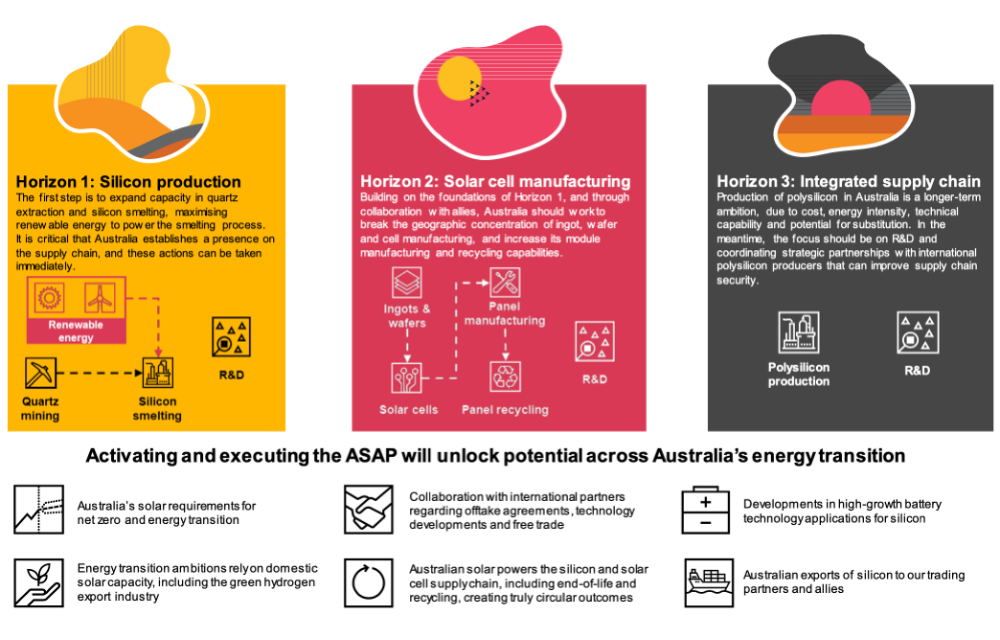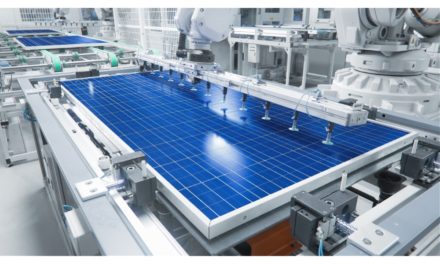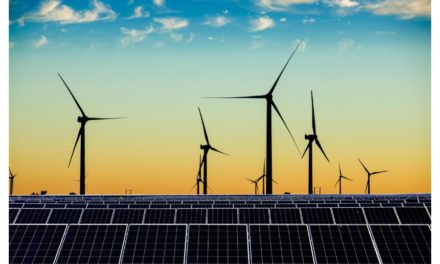- A CSIRO report makes a business case for Australia to develop its own fully integrated silicon and solar cell supply chain
- High-quality quartz is already available here, and now it needs to develop silicon smelting capacity and turn it into high-purity silicon
- While it can create jobs and new industries, a home-grown supply chain of these critical components will enable the country to meet its net-zero ambition in a sustainable manner
As Australia expands the share of solar in the energy mix from 12% in 2021 to 50% in 2050, it cannot rely on foreign imports since current supply chain dynamics pose an energy security risk for the country, hence it needs to develop a fully integrated silicon and solar cell supply chain to de-risk the overall solar supply chain, recommends the Commonwealth Scientific and Industrial Research Organization (CSIRO).
With COVID-19 lockdowns blocking solar supply chain and leading to elevated raw material prices, accompanied by geopolitical tensions, natural disasters, climate change, energy market issues, the world has learnt that the reliability and stability of supply chain to meet net zero targets cannot be assured.
“But one of the greatest risks to Australia’s solar ambitions and energy future is our reliance on overseas supply chains for solar cell technology,” said CSIRO Principal Research Scientist Dr Chris Vernon.
Currently Australia, like the rest of the world, depends on Chinese polysilicon production and China accounts for between 75% to 97% of all stages of production from polysilicon to solar cells. Being the most critical ingredient of a solar cell, having a domestic polysilicon and solar supply chain then makes sense.
“Australia has enormous potential when it comes to supplying solar power for its own and also the region’s energy needs, but our current reliance on concentrated silicon and solar cell supply chains poses risks to Australia’s energy independence,” added Vernon.
While Australia has ample supply of high-quality quartz, it is the development of its own silicon smelting capacity and turn it into high-purity silicon that needs attention. “Increasing production of silicon in Australia is the 1st step for Australia to develop its own capability and capacity in the solar cell supply chain,” according to the CSIRO report titled Australian Silicon Action Plan (ASAP).
To support and de-risk the country’s overall solar supply chain, the CSIRO commissioned PricewaterhouseCoopers (PwC) Australia authored ASAP proposes a set of recommendations and actions across 3 horizons:
- Horizon 1: Start with expanding quartz extraction and silicon smelting, using renewable energy for the process. Identifying potential locations for smelting facilities, and research funding into next generation processes and technologies is ‘critical’ for Australia. Report writers see these goals as achievable and can be commenced immediately.
- Horizon 2: Focus on expanding supply chain activities as developing more complex supply chain steps of manufacturing components for solar cells as ingot, wafer and cell production. This stage does not go linear rather focuses on areas most feasible for Australia to accomplish in the medium term. However, it requires offshore polysilicon to be sourced.
- Horizon 3: Following completion of actions in the above 2 horizons, take actions to establish an integrated, low-carbon circular solar cell supply chain to support polysilicon production and focus on R&D efforts to develop and scale emerging and future technologies. “A technology breakthrough with this process, and effective commercialization and deployment at scale, might enable the substitution of the current polysilicon production step in the supply chain,” as per the authors.
Having a domestic solar supply chain has the potential to make Australia a ‘jobs powerhouse in the solar revolution’ as well as make it energy self-sufficient, while creating new industries.
“The goal is for the entire supply chain to be low carbon, with smelting, processing and manufacturing industries powered by renewable energy, creating truly circular outcomes,” reads the report. “However, this is a challenging vision to realize. It will require collaboration among all stakeholders.”
ASAP can be downloaded for free from CSIRO’s website.
The threat of a centralized solar supply chain is very real as the International Energy Agency (IEA) pointed out in a July 2022 report calling upon governments globally to diversify their PV supply chains in a sustainable and affordable manner, to avoid being vulnerable to heavy dependence on a single nation (see IEA Calls For Diversified Solar Supply Chains).
This report from Australia’s national science agency CSIRO puts Australia on the list of countries that sooner or later will encourage local production of solar energy supply chain. The US and India has already there on this list with their respective regulatory and economic framework bringing in integrated PV manufacturing slowly but surely.















